How to Use Wordvice AI to Write an Essay Introduction
The saying “starting is the hardest part” has never been more true than when writing an essay introduction. Thankfully, you live in the age of the handy free AI text editor that can help you with all of your writing needs. Wordvice’s suite of AI writing tools can not only teach you how to start an introduction paragraph, but also how to structure it in an interesting and concise way.
Wordvice AI uses the latest machine learning technology to understand your text and make the best suggestions for improvement. The Wordvice free AI Proofreader elevates your writing to another level and the free AI Paraphraser helps make your ideas more original and compelling.
Let’s see how Wordvice AI’s writing assistant software can show you how to write an essay introduction paragraph one step at a time.
How to Start an Essay on the Right Foot
Think of the introduction paragraph as the “first impression” of your essay. A good first impression makes readers want to know more, while a poor first impression could make them stop reading.
Here are four elements of a good introduction paragraph:
- Hook - the first sentence that captures your reader’s attention
- Background - introduces your topic to the reader
- Thesis - states your essay’s stance on the topic at hand
- Overview - a brief overview of how the essay is structured
Step 1: Use Wordvice AI’s “creative” paraphraser mode to enhance your essay
The first step to grabbing your readers’ attention is creating an interesting essay hook. The hook is usually the very first or second sentence of your introductory paragraph. The question is, how do you make a serious topic sound so fascinating that people will want to read more?
Start by making a list of facts about your topic. These could be little-known facts, well-known facts, or facts that you think are most relevant to your thesis statement. Don’t worry if the fact sounds dry — Wordvice AI will fix that!
Open up the Wordvice AI Paraphrasing Tool, and under Modes, click Creative.
Paste your fact into the left-hand side textbox and click Paraphrase. Now watch as the Wordvice AI paraphraser transforms your dry fact into a thought-provoking essay hook!
Introduction paragraph examples: Good essay hooks
Example 1:

Example 2:
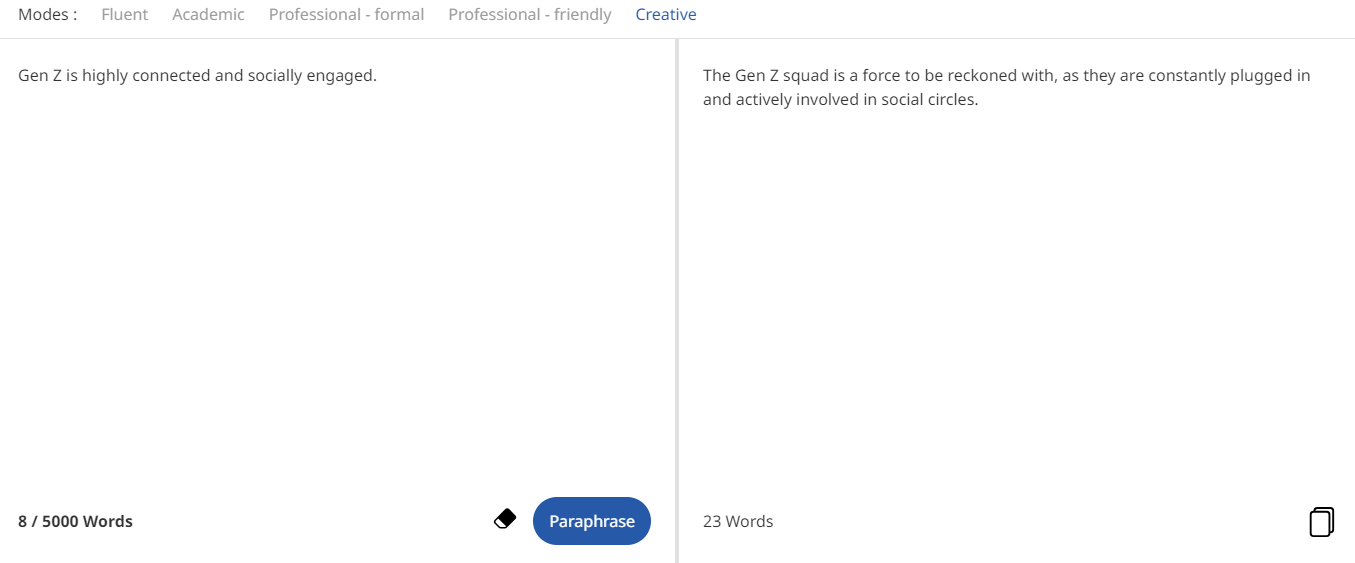
Step 2: Structure background information using Wordvice AI’s “academic” paraphraser mode
After piquing your readers’ curiosity with a hook, give them some context to help them understand your topic. Consider including some of the following:
- Historical or social context
- An overview of the debate surrounding this topic
- A summary of relevant theories or the latest research
- Some definitions of terms, especially those your reader may not be familiar with.
Choose 2-3 pieces of relevant background information and list them in bullet points, then open the Wordvice AI paraphrase tool and select Academic.
Paste your bullet points into the left-hand side text box, click Paraphrase, and let the Wordvice AI writing assistant string your bullet points into a smoothly structured background information section.
Essay introduction example: Background information for the introduction paragraph
Example 1:
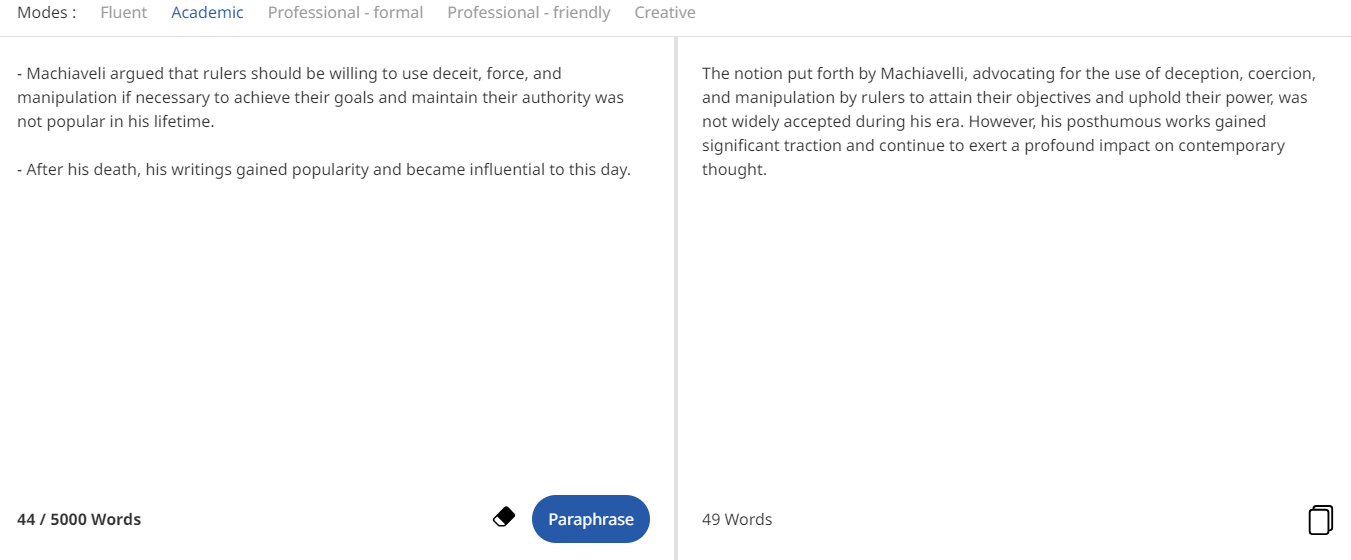
Example 2:

Step 3: Make your thesis statement clearer with Wordvice AI’s “concise” proofreader mode
Now that you have equipped your readers with the information they need to understand your topic, it’s time for the big reveal. Clearly state your thesis statement by outlining your stance on the issue at hand. Give readers a brief summary of your overall argument.
When outlining your thesis statement, focus on getting your message across rather than how beautifully written it is — leave that to the Wordvice AI Writing Assistant.
Once you have the thesis statement you want to include in your essay introduction, go to the Wordvice AI free proofreading tool and select the Concise mode. Under Document Type, select Academic, and click Proofread Now. The Wordvice AI writing helper will then analyze your writing for redundant words that could be cut out, simplified, or replaced with clearer language.
Essay introduction example: succinct thesis statement
Example 1:
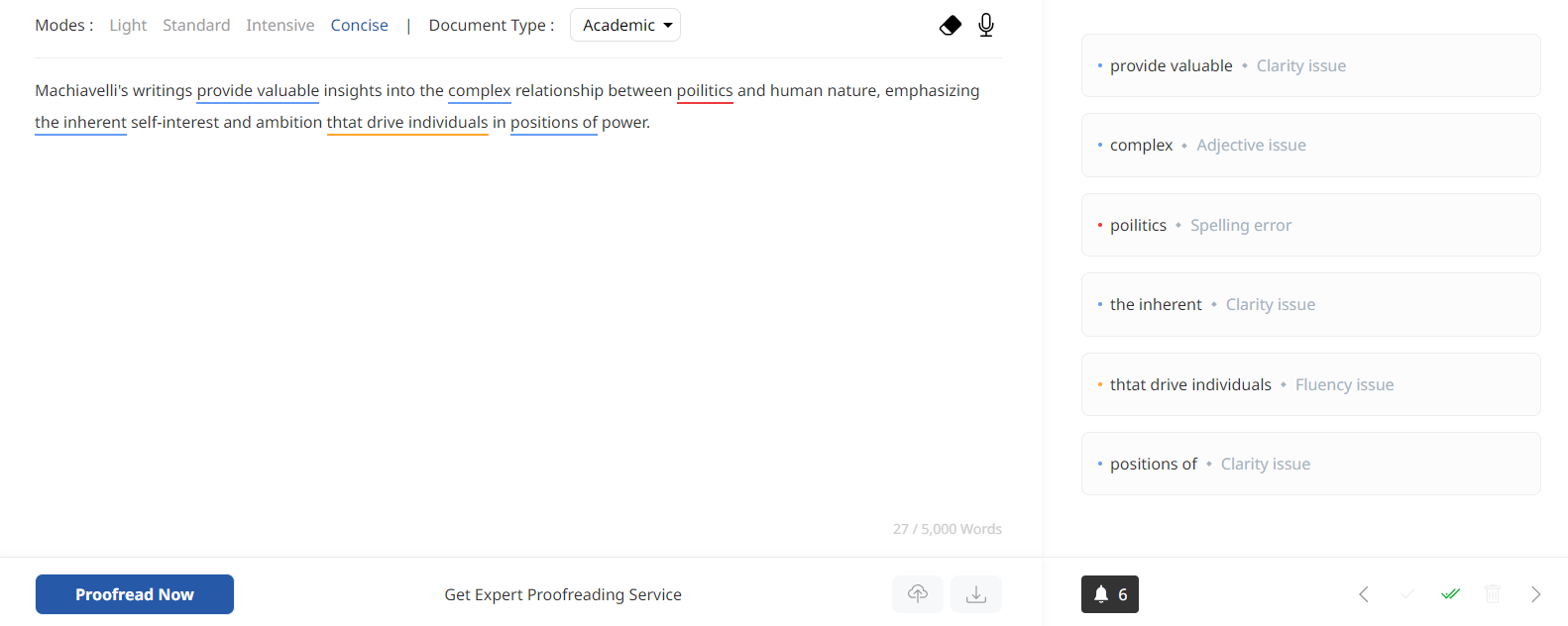

Example 2:
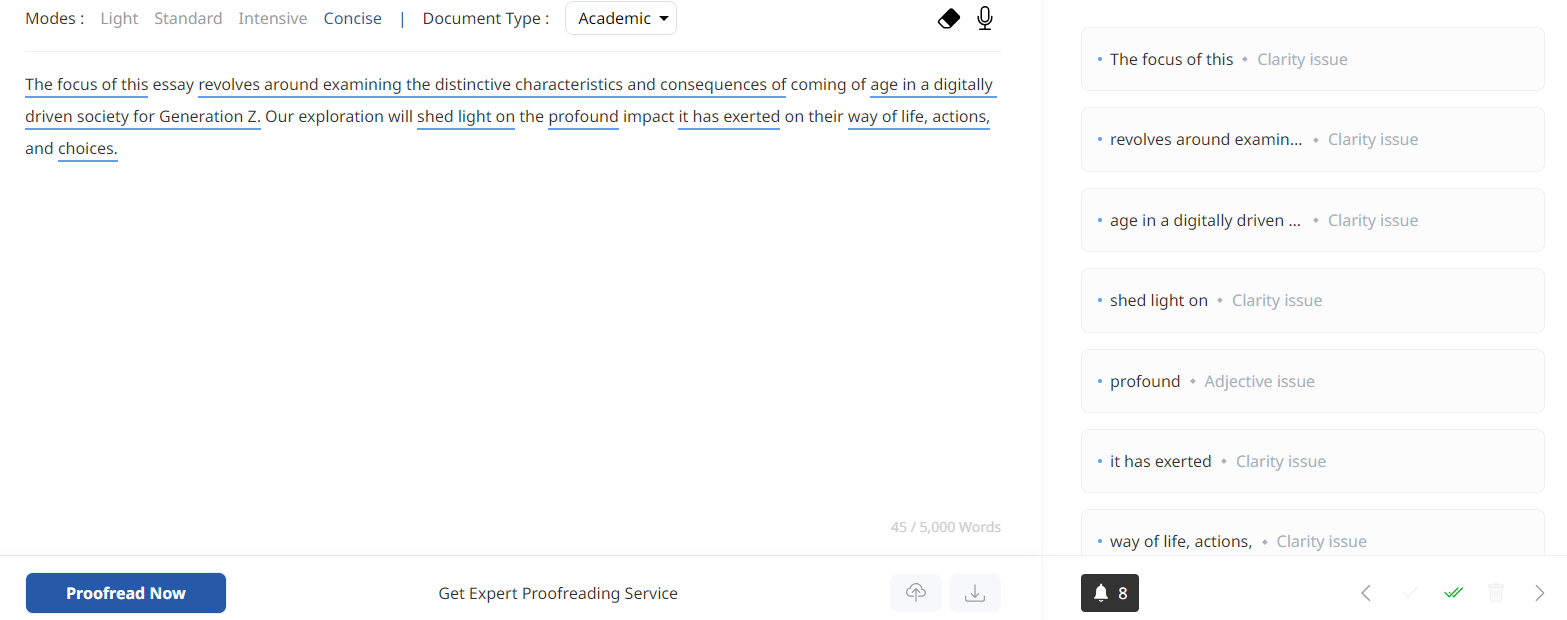
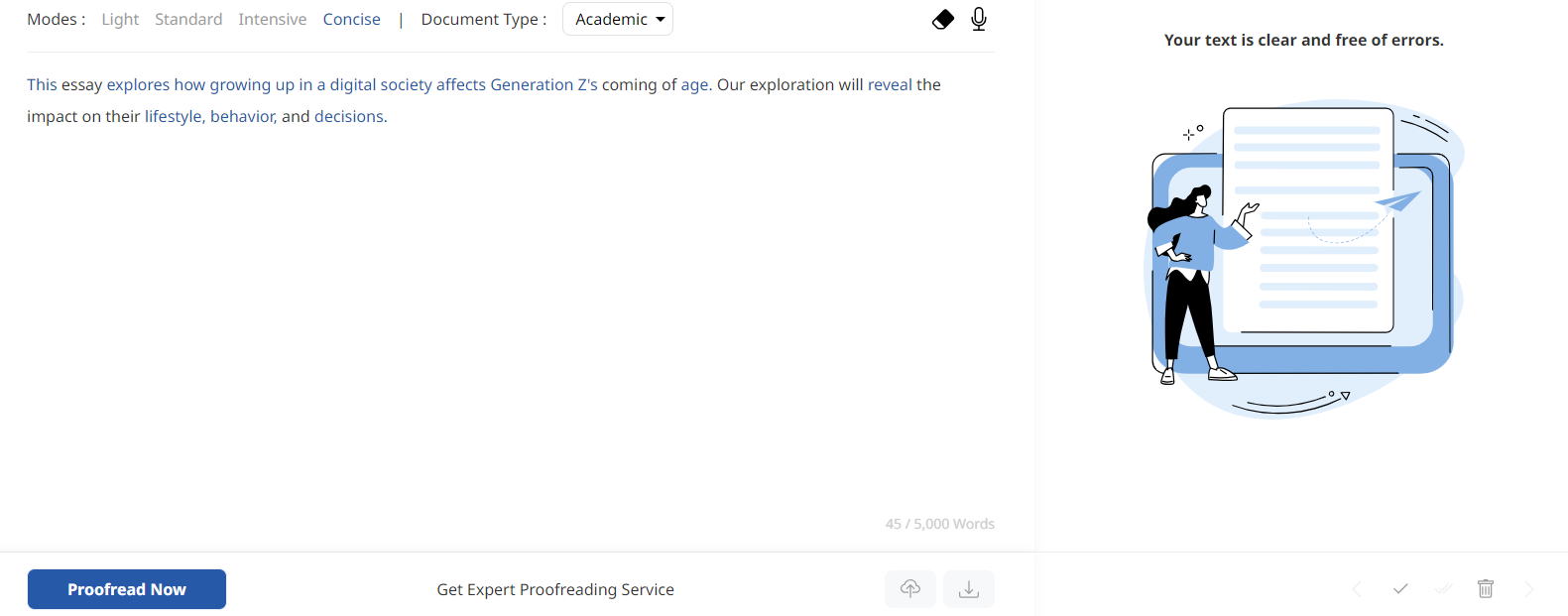
Step 4: Outline the structure of your essay using Wordvice AI’s “fluent” paraphraser mode
To give your readers an idea of what to expect in your essay, a good way to end the introduction paragraph is to briefly outline the main points that you will go over. Remember to keep the outline as brief as possible, as you will be expounding on them at length further onwards.
Following the format below, list in bullet points the main point of each of your essay’s sections.
First, this essay will examine… Then, this essay will examine… Finally, this essay will examine…
To polish up the flow of your outline, open the Wordvice free paraphrasing tool and set the mode to Fluent. Then, enter your text in bullet points in the left-hand text box and click Paraphrase. Wordvice AI’s writing assistant software will use your bullet points to create a brief structured outline.
Introduction paragraph examples: giving an overview of your essay
Example 1:
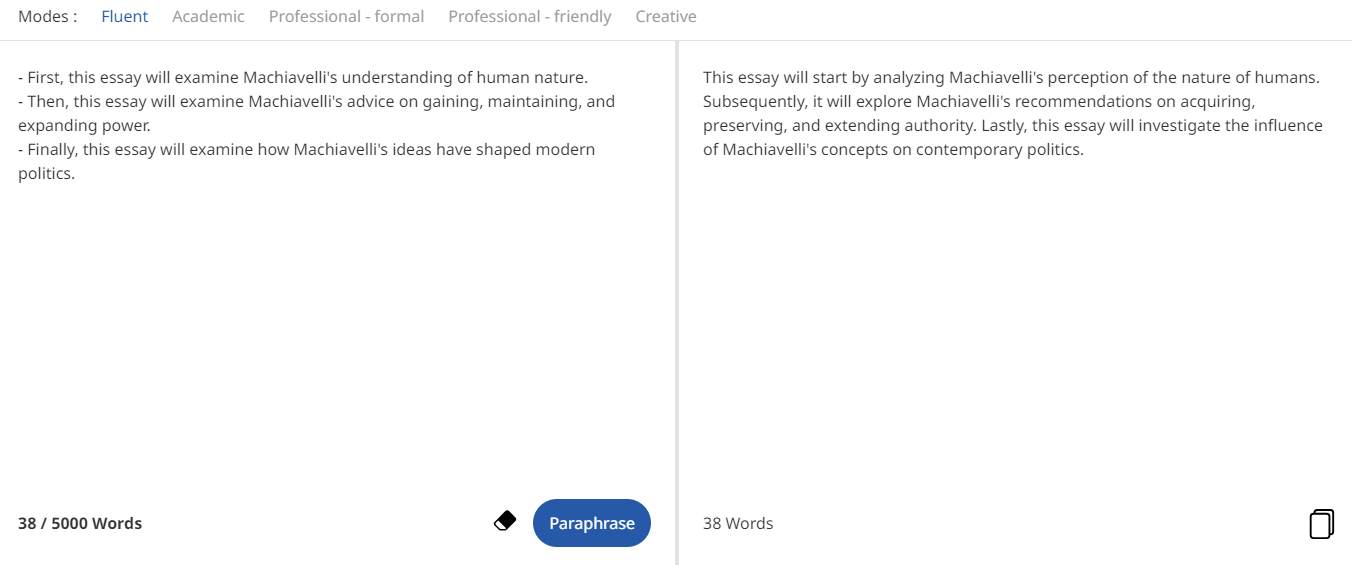
Example 2:
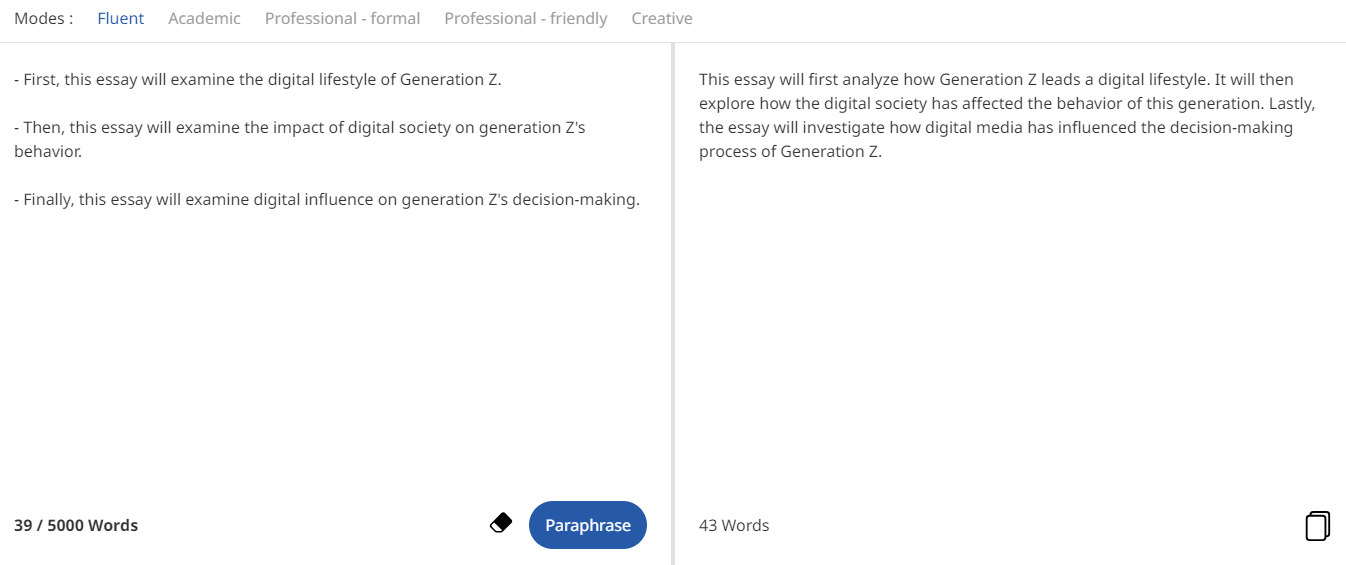
Essay Introduction Examples
All done! Have a look at the completed essay introduction examples we looked at in this article!
Example 1:
Example 2:

